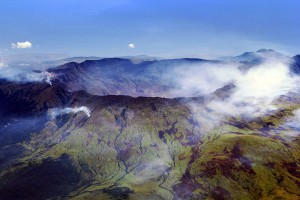The eruption of Tambora, a volcano located in Indonesia on April 10, 1815, led to global consequences and a multi-year reduction in global temperature which has not been equaled in modern times, although the eruptions of Krakatoa, Agung and Pinatubo also reduced global temperatures for several years after the eruptions.
National Geographic starts their recent article on the eruption thus:
“On April 10, 1815, Indonesia’s island of Sumbawa became ground zero for the worst volcanic eruption in modern times—and a chilling example of a widespread climate catastrophe.
The Tambora event was the largest volcanic eruption in the last millennium. On the U.S. Geological Survey’s Volcano Explosivity Index, Tambora scores a seven out of eight. That’s ten times bigger than the 1991 Mount Pinatubo eruption and a hundred times more powerful than the 1981 Mount St. Helens blast.”
Wikipedia also has a good description of the eruption at https://en.wikipedia.org/wiki/1815_eruption_of_Mount_Tambora.
Another eruption of this size would have huge consequences for agriculture across the world, and so when the next large tropical volcano erupts, climatologists will be watching it carefully to see how much effect it has on global climate.
